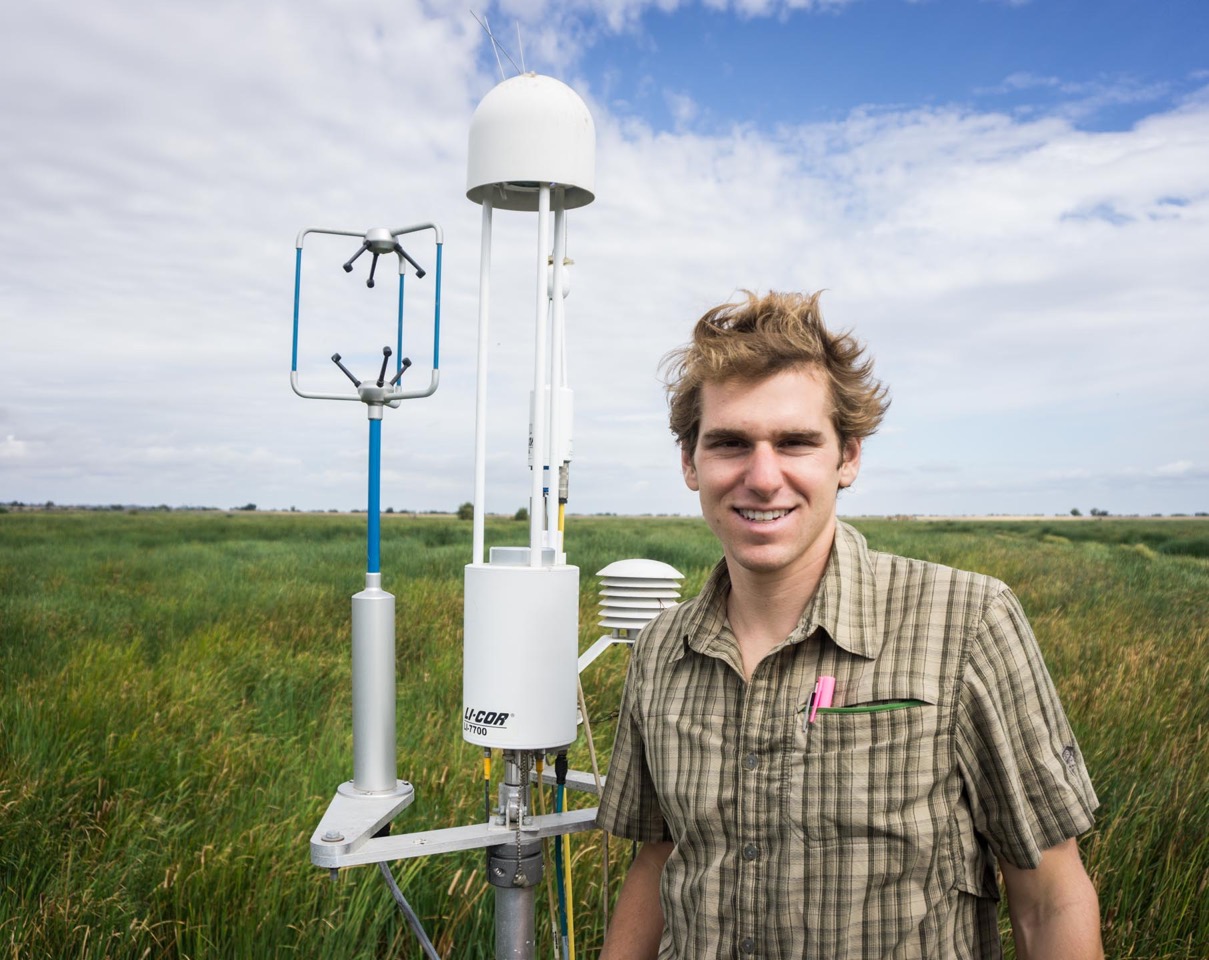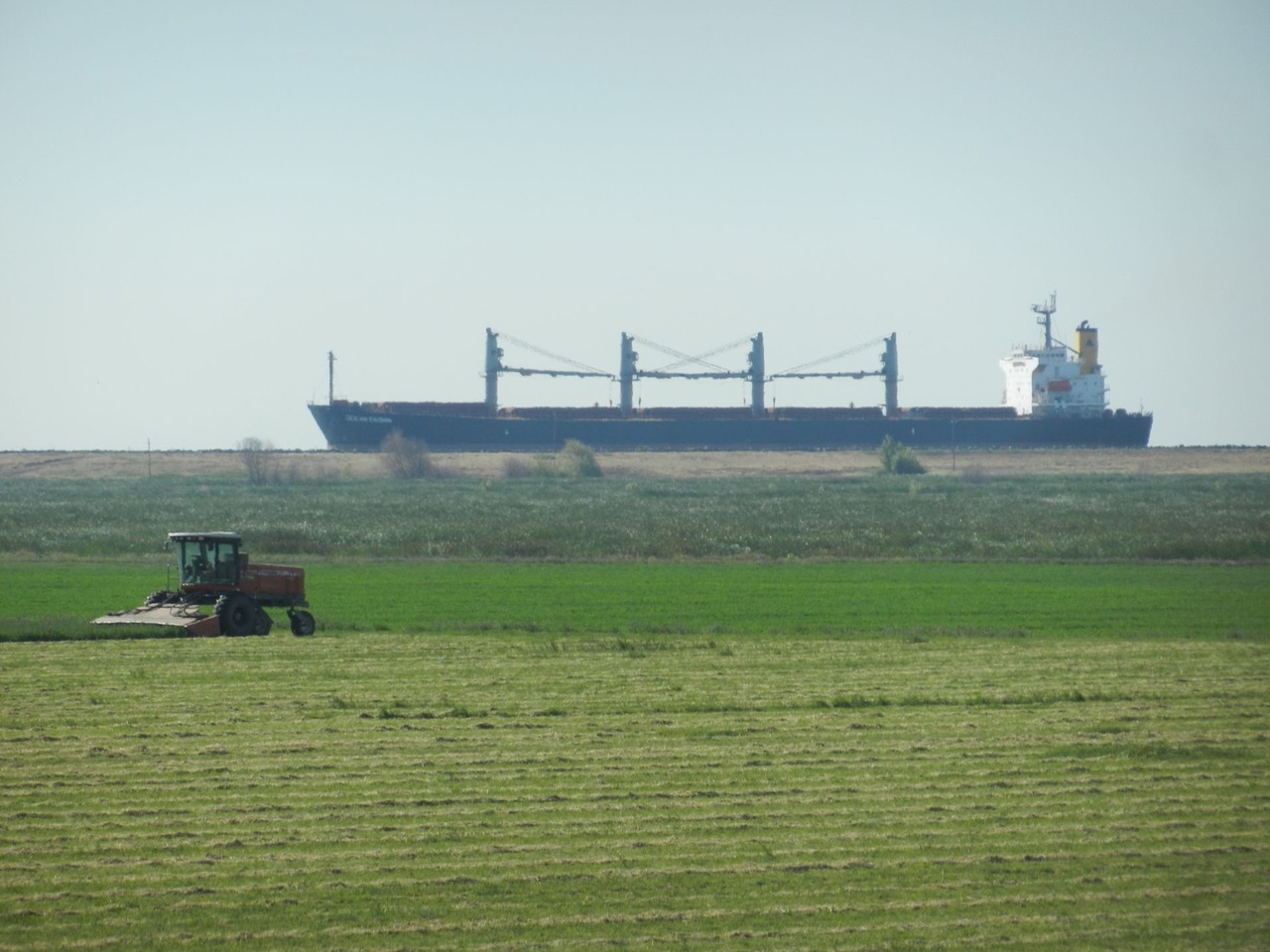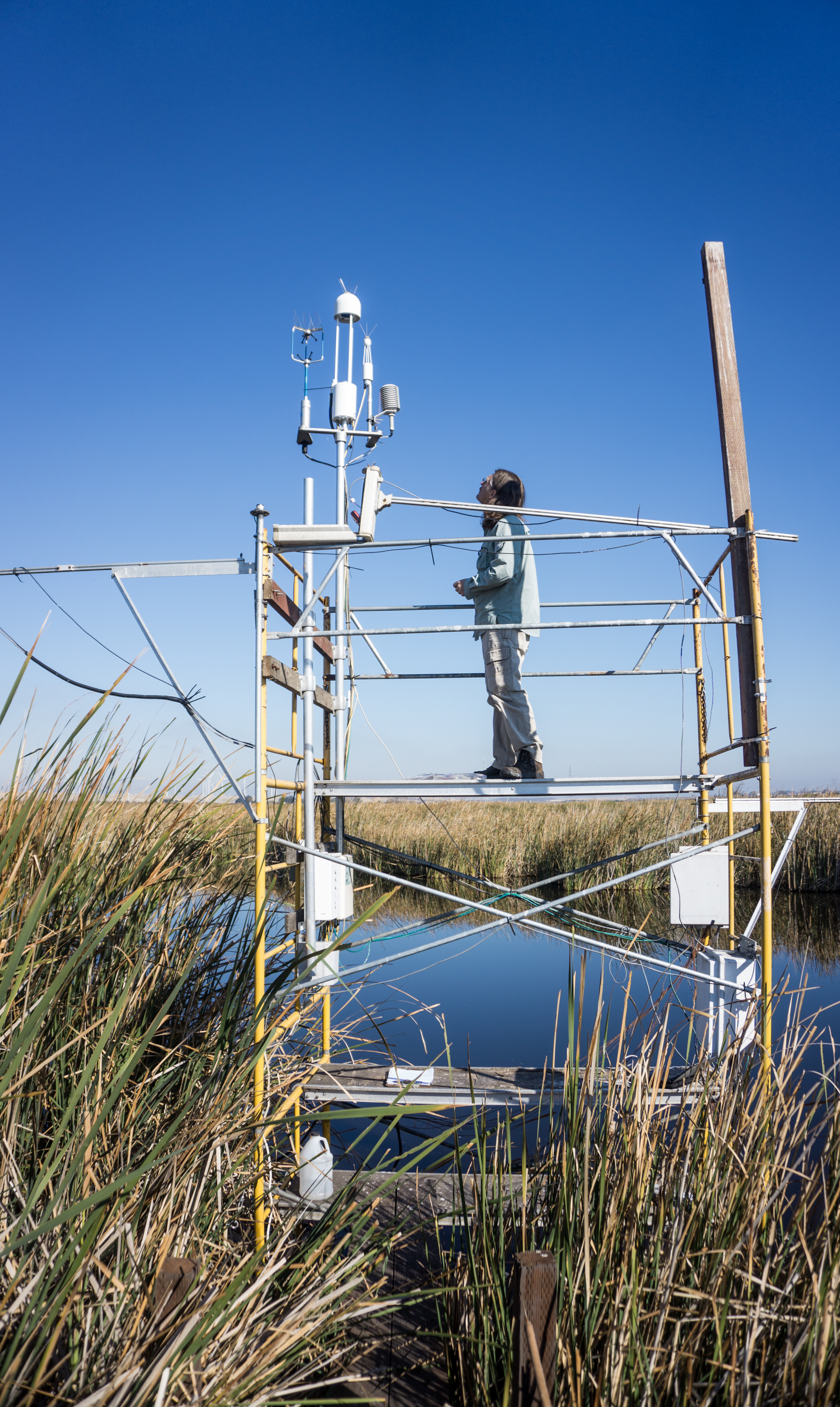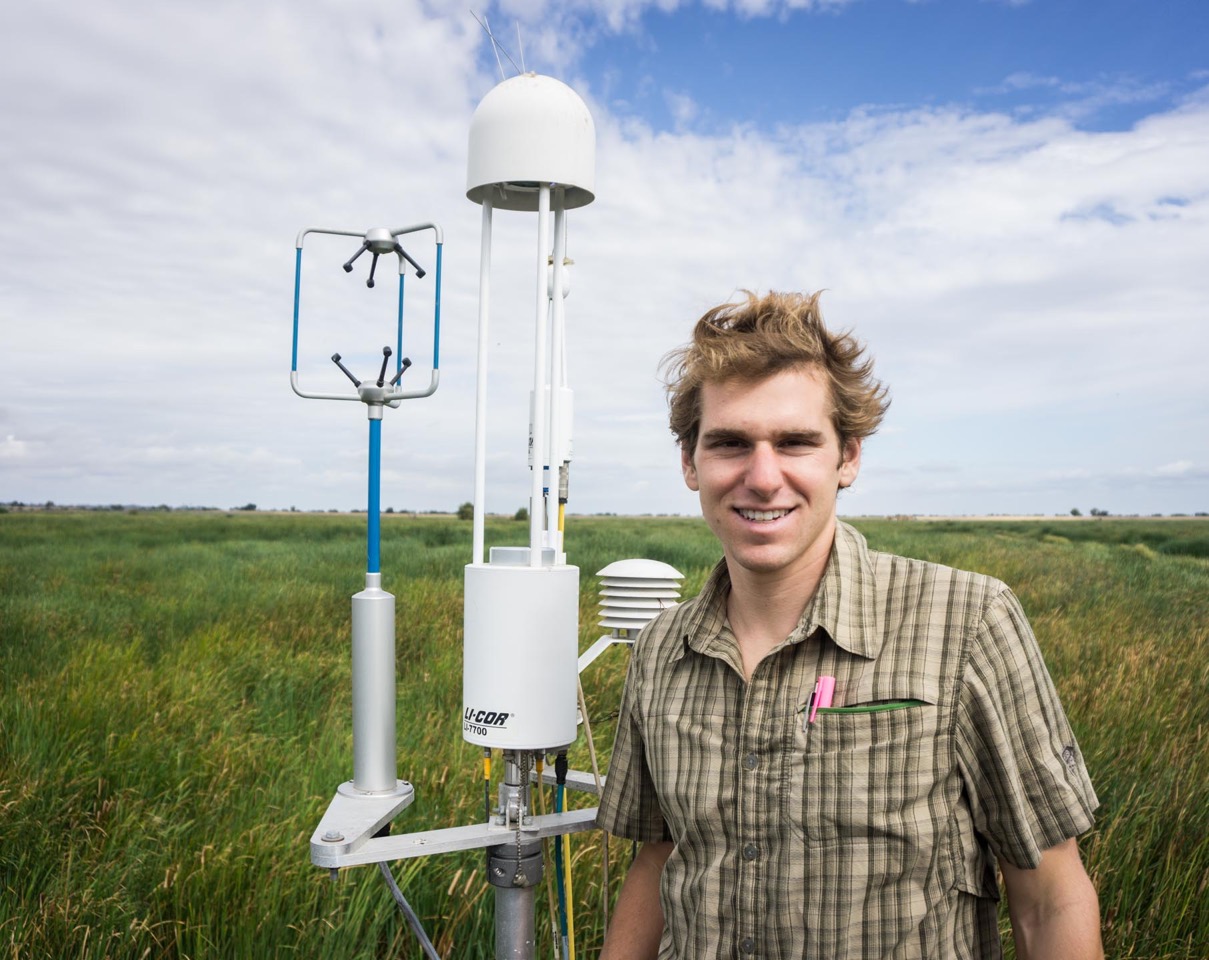
As a Delta Science Fellow from 2016-18, UC Berkeley PhD student Kyle Hemes conducted research to assess the benefit of restoring wetlands in the Sacramento-San Joaquin Delta for climate mitigation and carbon sequestration. The blog post below is an excerpt of a longer piece originally published by the Earth Island Journal.
From this vantage point, the deck of a cargo ship skims by above, beyond the fragile levee wall that holds back the mighty San Joaquin River. It passes effortlessly through the wide flat river that, due to the levee and the perspective, is completely out of view. A few centuries ago, standing in this same spot on the edge of Twitchell Island, we would have been covered in ten or twenty feet of peat: dark, pungent, carbon-rich soil - the muck of eons of decomposing plant matter and bacterial corpses. This island, like all the islands that make up the Sacramento-San Joaquin Delta, is a bowl ringed by precarious levee walls, floating in a network of rivers and channels, emptied of its carbon-rich soil by a century and a half of human meddling. 
Today that same spot on Twitchell Island looks remarkably different. Just a few years since being re-flooded and planted with wetland species, bright green stalks extend from the water towards the sky, waving gently in the same steady westerly breeze. Instead of soil particles being kicked up by the wind and carbon being oxidized into the atmosphere, this restored wetland has trapped the soil, and with it the organic carbon that makes it up. It sits dormant under the surface, protected from those oxygen-loving microbes, holding the emergent tule and cattail marsh plants in place. With every year, new soil slowly accumulates under foot. Centimeter by centimeter, this subsided bowl is refilling with dark, rich, pungent peat soil.
 Anchored in this now-flooded peat soil, a scientific tower made of yellow scaffolding rises toward the sky. This tower, along with seven others on different land uses across the Delta, has a small colony of sensors mounted to the top corner, just within reach as you balance on the railing to take a look. Invisible to the naked eye, an infrared beam is being snapped back and forth between the mirrors on the instrument, detecting the greenhouse gases on their way into or out of the landscape.
Anchored in this now-flooded peat soil, a scientific tower made of yellow scaffolding rises toward the sky. This tower, along with seven others on different land uses across the Delta, has a small colony of sensors mounted to the top corner, just within reach as you balance on the railing to take a look. Invisible to the naked eye, an infrared beam is being snapped back and forth between the mirrors on the instrument, detecting the greenhouse gases on their way into or out of the landscape.
 Ecosystem greenhouse gases move in two directions: out of the land surface via plant and soil respiration and into the land surface through photosynthesis. With the advent of big data and small computers, new meteorological approaches allow us to directly measure the breathing of the biosphere at the landscape scale. With the plug of an ethernet cable and a few clicks on the trackpad, our laptop ingests the last two weeks of data describing the inhalations and exhalations of this ecosystem below us. The figure that emerges looks strangely like a heartbeat: a patterned pulse of ups and downs in carbon dioxide, varying on multiple timescales, repetitive but with momentary spikes. It’s the universal glyph of an ecosystem alive.
Ecosystem greenhouse gases move in two directions: out of the land surface via plant and soil respiration and into the land surface through photosynthesis. With the advent of big data and small computers, new meteorological approaches allow us to directly measure the breathing of the biosphere at the landscape scale. With the plug of an ethernet cable and a few clicks on the trackpad, our laptop ingests the last two weeks of data describing the inhalations and exhalations of this ecosystem below us. The figure that emerges looks strangely like a heartbeat: a patterned pulse of ups and downs in carbon dioxide, varying on multiple timescales, repetitive but with momentary spikes. It’s the universal glyph of an ecosystem alive.
Owing to their long growing season and abundant access to water, the wetlands are among the most productive in the world, removing relatively large amounts of carbon dioxide from the atmosphere. But there is no free lunch, as they say, and a portion of that carbon gets re-released into the atmosphere as methane, a more potent greenhouse gas created by microbes in the flooded sediment. The restoration also affects how heat is partitioned from incoming solar radiation; restoration could lead to a local cooling effect in addition to the soil carbon sequestration. Our team of researchers is diligently keeping track of these newly created Delta wetlands, and the agricultural land uses from which they are restored, to understand how wetland restoration could be part of the solution to California’s linked carbon and water challenges.
- Read the full article on Earth Island Journal
- Read more about Hemes' Delta Science Fellowship project.




